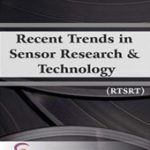
Pratik Shirsat

Swarup Ghotekar

Purushottam Ombase

M.B. Mali
- Student Department of Electronics and Telecommunication Engineering, Sinhgad College of Engineering, Pune Maharashtra India
- Student Department of Electronics and Telecommunication Engineering, Sinhgad College of Engineering, Pune Maharashtra India
- Student Department of Electronics and Telecommunication Engineering, Sinhgad College of Engineering, Pune Maharashtra India
- Professor Department of Electronics and Telecommunication Engineering, Sinhgad College of Engineering, Pune Maharashtra India
Abstract
This flexibility is critical for maximizing power and performance, which are critical elements in IoT applications with limited resources. A wide range of sensors, including as motion, ambient light, temperature, and humidity sensors, are integrated into the IoT sensor board. The board can record and analyze real-time data thanks to these sensors, which opens up a world of possibilities for applications ranging from industrial automation to environmental monitoring. In conclusion, IoT researchers, developers, and enthusiasts have access to a strong and adaptable platform with this RISC-V based IoT Development Sensor Board. It is a useful tool for developing scalable and effective IoT solutions across a range of disciplines due to its adaptable nature, wide range of sensor array, and support for standard communication protocols.
Keywords: Iot, RISC-V, architecture, sensors, algorithm
[This article belongs to Recent Trends in Sensor Research & Technology(rtsrt)]
Browse Figures
References
- Sharma, Manoj and Bhatnagar, Ekansh and Puri, Kartik and Mitra, Amitav and Agarwal, Jatin, A Survey of RISC-V CPU for IoT Applications February 12, 2022.
- Waterman and K. Asanović, The RISC-V Instruction Set Manual; Volume I: User-Level ISA SiFive Inc. and CS Division EECS Department University of California, Berkeley, 2017.
- Soh, Ping Jack, et al. “Wearable wireless health monitoring: Current developments, challenges, and future trends.” IEEE Microwave Magazine 16.4 (2015): 55-70.
- Tann et al. Hardware-Software Codesign of Accurate, Multiplierfree Deep Neural Networks. In Proc. DAC, 2017.
- Conti, Francesco, et al. “Accelerated visual context classification on a low-power smartwatch.” IEEE Transactions on Human-Machine Systems 47.1 (2017): 19-30.
- Metz. Google, Facebook and Microsoft are remaking themselves around AI. https://wired.com/2016/11/google-facebook-microsoftremaking-around-ai/. Online. Accessed Sept. 17, 2017.
- Magno, M., Pritz, M., Mayer, P. and Benini, L., 2017, June. DeepEmote: Towards multi-layer neural networks in a low power wearable multi-sensors bracelet. In Advances in Sensors and Interfaces (IWASI), 2017 7th IEEE International Workshop on (pp. 32-37). IEEE.
- Wang, Y. Liu, Y. Sun, Y. Li, D. Zhang and H. Yang, “An energyefficient heterogeneous dual-core processor for Internet of Things,” 2015 IEEE International Symposium on Circuits and Systems (ISCAS), Lisbon, 2015.
- Ghasemzadeh, H.; Jafari, R.; “Ultra low-power signal processing in wearable monitoring systems: A tiered screening architecture with optimal bit resolution.” ACM Transactions on Embedded Computing Systems (TECS), 2013
- Gautschi et al., “Near-Threshold RISC-V Core With DSP Extensions for Scalable IoT Endpoint Devices,” in IEEE Transactions on Very Large Scale Integration (VLSI) Systems, vol. 25, no. 10, pp. 2700-2713, Oct. 2017.

Recent Trends in Sensor Research & Technology
| Volume | 11 |
| Issue | 01 |
| Received | April 25, 2024 |
| Accepted | May 10, 2024 |
| Published | May 25, 2024 |

